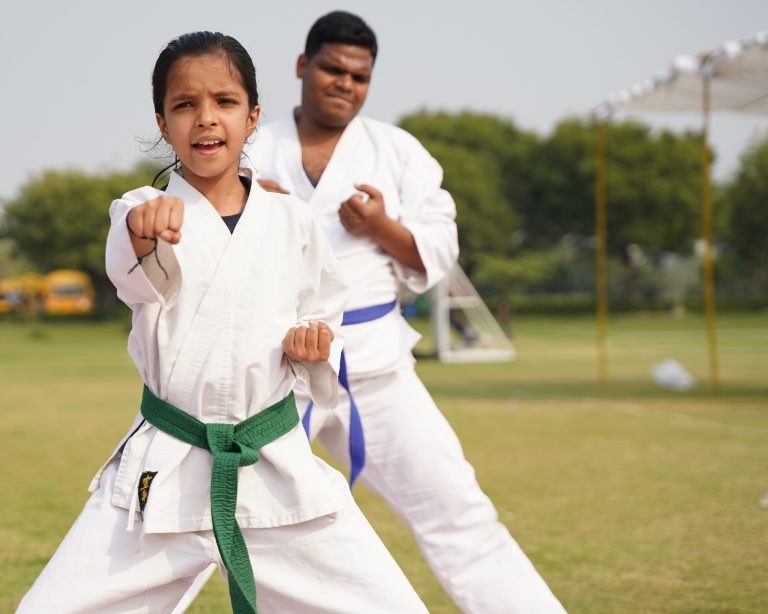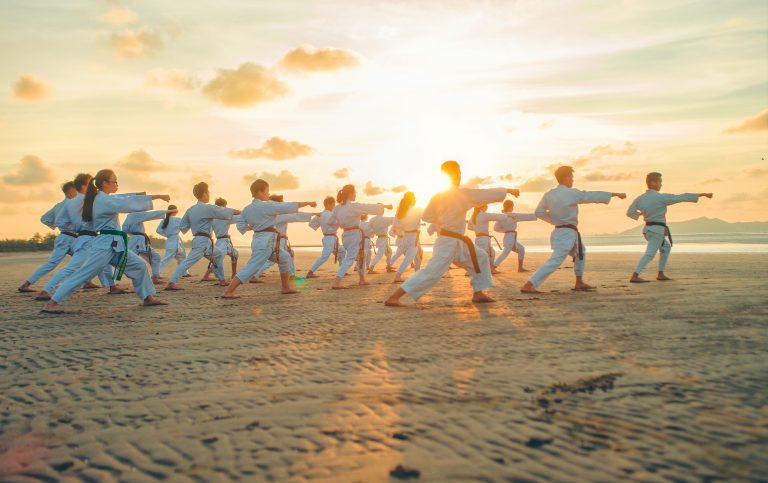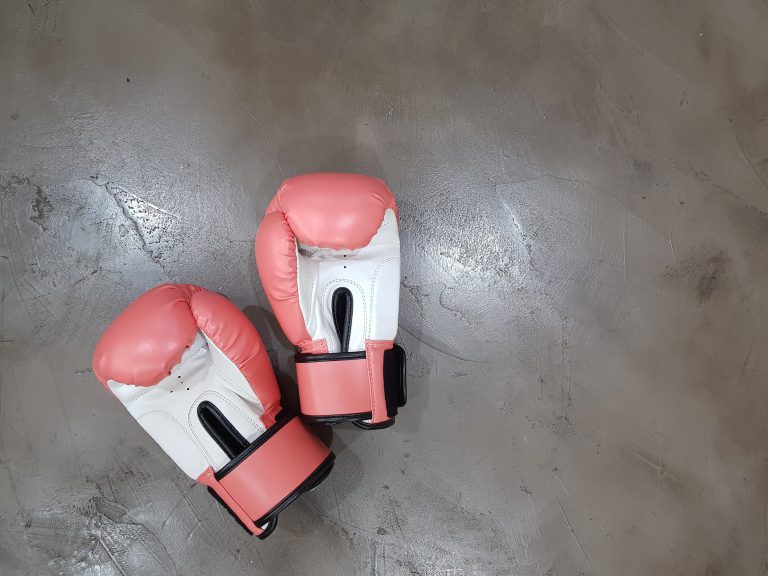The Importance of Karate Dojo Size
Karate is a popular martial art that is practiced all over the world. It involves a combination of different techniques, including strikes, kicks, and blocks, and it requires a considerable amount of space to learn and perfect. One of the crucial factors that determine the effectiveness of karate training is the size of the dojo. In this blog post, we will discuss the impact of karate dojo size on training, the recommended dojo size, and some tips on selecting the right dojo for your practice.
Why is the size of the Karate Dojo Important?
The size of the karate dojo is a critical factor that determines the quality of training. A spacious dojo allows ample room for movement and flexibility, which is essential for Karate training. Adequate space ensures the safety of everyone in the room during training. It reduces the chances of accidents, injuries and provides more room to perform complex movements and techniques.
Additionally, having sufficient space encourages focus and calmness during training. Karate involves deep breathing and requires a lot of concentration, and a cramped dojo can make it more challenging to focus effectively. Moreover, having limited space can be mentally and emotionally draining and can eventually affect the motivation levels of the students.
The Recommended Karate Dojo Size
The recommended size of a karate dojo varies depending on the number of students and the type of practice. However, here are the minimum requirements for a Karate Dojo:
– The dojo must be spacious enough to accommodate all students comfortably, whether in pairs, small groups, or individually.
– The dojo must be well-ventilated and have a clean and smooth floor surface.
– The height of the dojo should be at least 8ft to allow for jumping and high kicks.
– The width should be a minimum of 20ft for learners and 30ft for more experienced karateka.
– The length should be a minimum of 25ft for learners and 35ft for more experienced karateka.
It is essential to note that these are the recommended minimum standards for a karate dojo. However, dojo owners can still expand their sizes, depending on their style and preferences.
How to Choose the Right Karate Dojo
When selecting a karate dojo, you should consider the size of the training space. Here are some tips on selecting the right dojo:
1. Visit the Dojo: Before joining any dojo, it is essential to visit and get a feel for what the training is like. Check to make sure that the dojo has sufficient space for training.
2. Consider the Number of Students: A good karate dojo should have enough space to accommodate all students without overcrowding. Consider the number of students in a class and the mat size.
3. Suitability for Your Level: Different dojos provide training at different levels, from novice to advanced. Ensure that the dojo you choose matches the level of your expertise.
4. Look for Safety Measures: A good dojo should have appropriate safety measures in place, such as the availability of first aid kits, and should follow all Covid-19 protocols.
Frequently Asked Questions about Karate Dojo Size
Karate is an excellent form of martial arts that has been around for centuries. This Japanese originated form of martial arts has spread all over the world, and its popularity continues to grow every day. If you’re planning on taking up karate, you’ll need to find a well-equipped dojo that suits your needs. However, with that in mind, it’s natural to have a few questions concerning the ideal karate dojo size. Here are the most frequently asked questions about karate dojo size.
What is the ideal karate dojo size?
The ideal karate dojo size depends on various factors such as the number of students, the type of training, and the equipment involved. A typical dojo should have a training area of at least 1000-1500 square feet. This size is adequate for accommodating ten to twenty students, with some extra space for training equipment, storage, and other necessary facilities.
What are the benefits of having a larger karate dojo?
A larger dojo has several benefits, including more space for students to move around freely without fear of knocking into someone else. A bigger dojo also allows for more comprehensive and advanced training, such as breathing exercises, meditation, and acrobatic techniques if required. Additionally, a larger dojo encourages a sense of community, allowing students to interact with each other and feel more motivated during training sessions.
Can a small dojo be an excellent training ground for karate?
Yes, a small dojo can be an excellent training ground for karate. While larger dojos offer more space, smaller dojos can still provide everything a student needs to learn karate. Sometimes, a smaller dojo can even have advantages, such as a more personalized training experience, better communication between the instructor and the student, and more focus on technique rather than space limitations.
How much square footage is required per student in a karate dojo?
Typically, a karate dojo training area should provide a minimum of 40 square feet of space per student. This space requirement includes the necessary training equipment such as punching bags, practice pads, and mats.
How does the ceiling height impact a karate dojo?
The ceiling height is another critical factor to consider when setting up a karate dojo. The dojo’s ceiling should be at least 10 to 12 feet high, as karate involves various movements such as high kicks and jumping, and these moves require adequate space to execute. It’s also essential to ensure that the ceiling is free from any potential hazards such as overhead lighting or fans that could cause injury.
How important is natural light in a karate dojo?
Natural light is beneficial in any dojo, as it provides a refreshing ambiance that helps students feel more energized and productive. Additionally, natural light can help students stay alert and focused during training, which is essential for a productive session. However, this shouldn’t be a deal-breaker, because artificial light can suffice as long as the lighting levels are consistent, and the students can see each other and their surroundings.
What is the role of mirrors in a karate dojo, and how many mirrors are enough?
Mirrors are an essential component in a karate dojo as they allow students to see themselves and their surroundings easily, which is critical for self-evaluation and refining their techniques. Ideally, 1 to 2 mirrors per wall along the length of the dojo should be more than enough to provide the students a full view of their reflections.
How does the flooring affect a karate dojo?
The flooring is another vital factor to consider when setting up a karate dojo. A dojo floor should be made of a soft, non-slip material such as foam, rubber, or matting, which will provide a stable, supportive surface and reduce the risk of injury during falls and rolls. Additionally, the flooring must be easy to maintain, and free from any signs of damage or wear and tear.
How to Determine the Ideal Size for a Karate Dojo
If you’re a martial arts enthusiast or practitioner, you may have thought about starting your own karate dojo. One of the essential factors in creating a successful dojo is determining the proper dojo size. This guide will help you determine the ideal size for a karate dojo that’s functional, comfortable, and safe for everyone involved.
Step 1: Determine Your Goals
Before you start planning your dojo size, it’s crucial to identify your goals for the dojo. Do you plan to focus on teaching children or adults? Will you also include classes for other martial arts disciplines? How many students do you expect to have at any given time? These questions will help you get a better understanding of the size requirements you need for your dojo.
Step 2: Consider the Ideal Training Space
The size of your dojo must be appropriate for your students to comfortably practice and train in. A typical training space should have a minimum length of 12 meters and a width of 6 meters. This size provides ample room for participants to exercise, jump, and move around without bumping into each other. If your classes include weapons training or grappling, you must account for additional space requirements.
Step 3: Allow Space for Spectators and Storage
In addition to the training space, you must also consider the comfort and convenience of your students and spectators. You must factor in space requirements for changing rooms and bathrooms. You may also want to create a designated viewing area for spectators to watch classes comfortably.
Furthermore, you must also allocate space for storage for equipment, mats, and other essentials. You must ensure that you have adequate storage space that is easily accessible, organized, and secure.
Step 4: Ensure Adequate Ventilation and Lighting
Ventilation and lighting are crucial factors in creating a safe and comfortable training environment. Your dojo must have adequate ventilation to ensure proper air circulation and reduce the risk of respiratory problems from dust and other airborne particles. Proper lighting is also necessary to avoid injury during training sessions. You may want to use natural light if possible, but if not, opt for artificial lighting that creates a natural ambiance.
Step 5: Consider Building Codes and Regulations
Before deciding on the size of your dojo, you must also consider the building codes and regulations in your area. There may be specific requirements for the number of exits, electric outlets, and ventilation systems that your dojo must have. Compliance with these regulations is crucial for the safety of everyone involved.
Step 6: Start Small and Grow as You Go Along
When starting a new dojo, especially if you’re on a budget, it’s best to start smaller and allow room for growth in the future. You can begin with a space that accommodates your minimum requirements, then expand your area once your membership increases.
Conclusion
Determining the ideal size for a karate dojo is not a one-size-fits-all approach. The size of your dojo must reflect your goals, the size of your potential student base, and other factors such as storage, ventilation, and lighting. By following these steps, you can create the ideal space that reflects your values, meets the needs of your members, and provides a safe and comfortable environment for everyone involved.
Inhaltsverzeichnis






